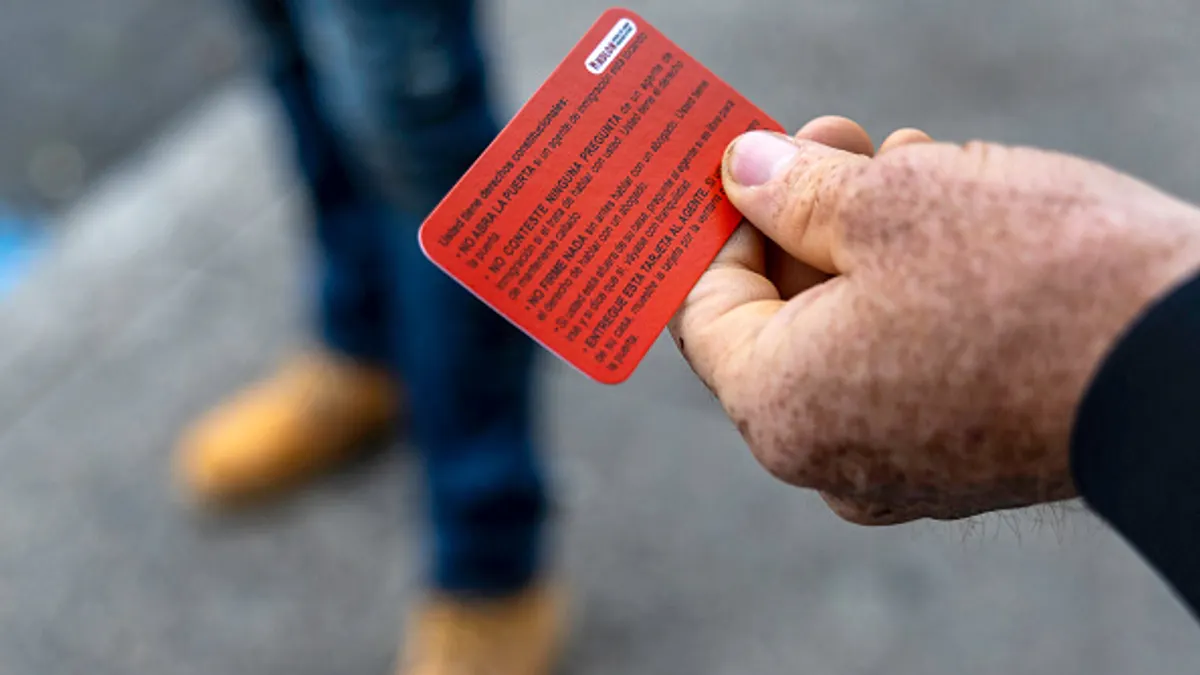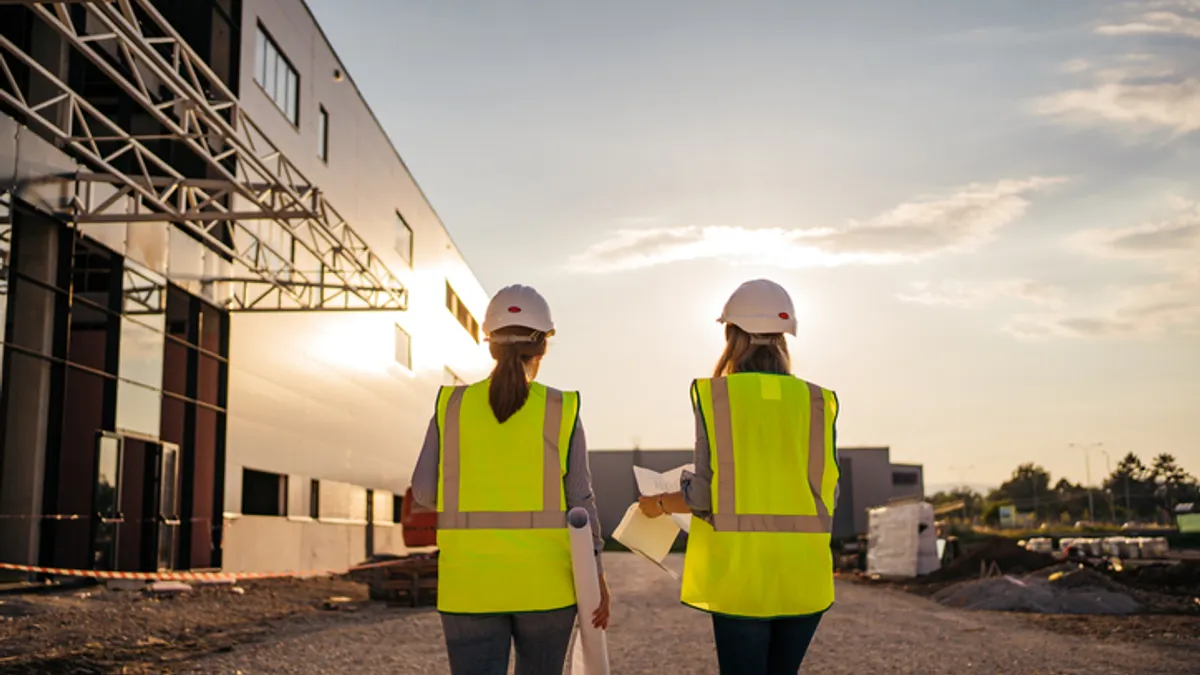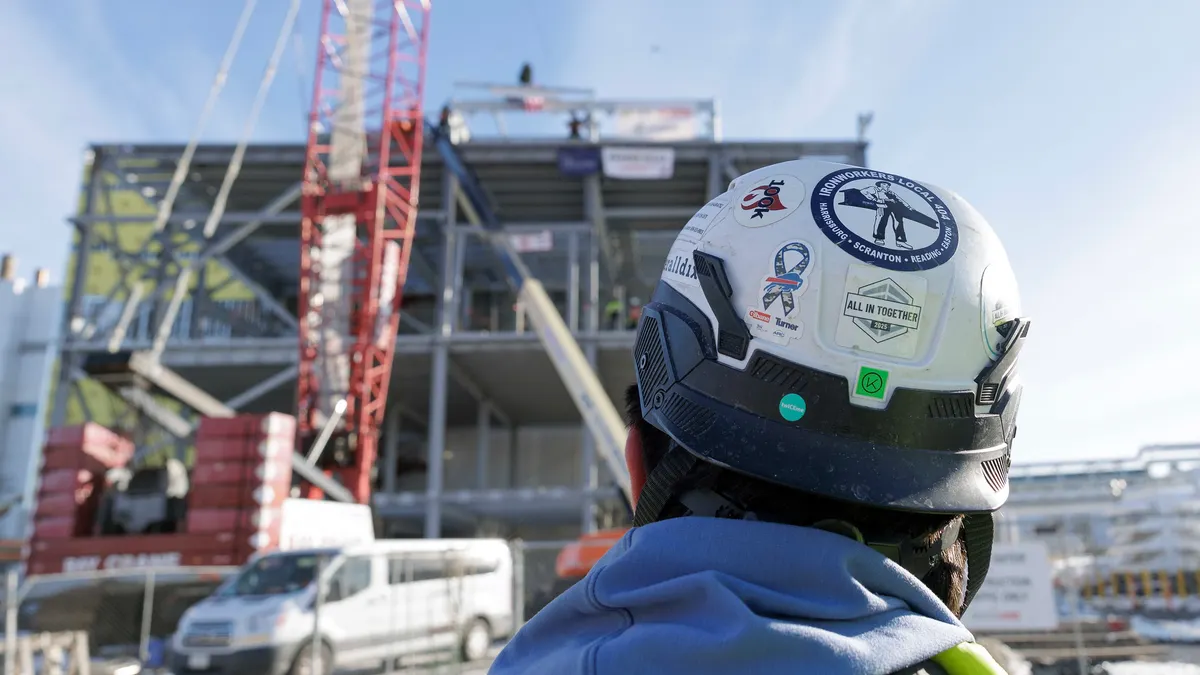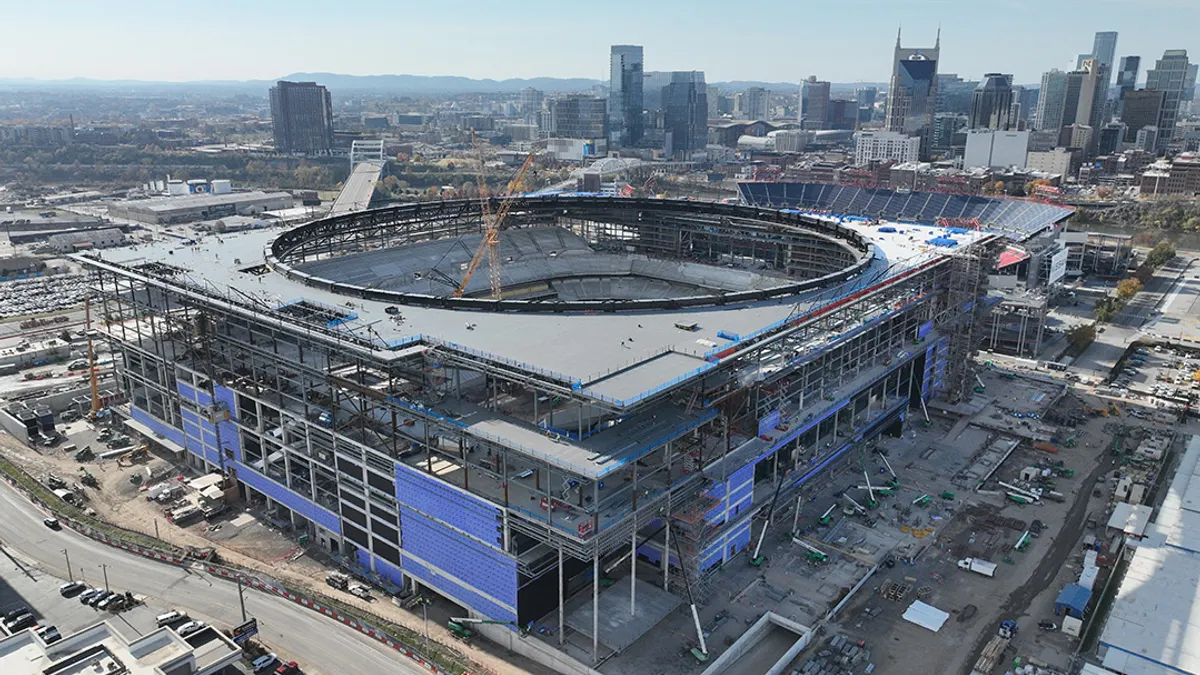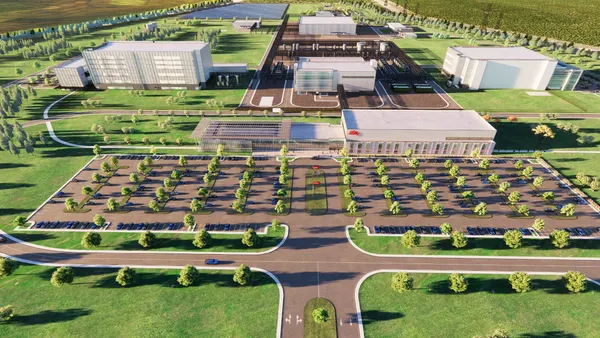In the first half of the year, one word continued to appear in headlines surrounding broad economic and political change: “uncertainty.” Construction Dive’s Uncertainty Series delves into how this lack of clarity is affecting contractors and what the future holds. Click on the links to read previous articles about interest rates and about tariffs.
Immigration and Customs Enforcement agents raided an Alabama elementary school construction site on July 23, WKRG5 reported, resulting in the arrest of 11 people.
It’s one of the latest examples of ICE cracking down on jobsites believed to be employing immigrants unauthorized to work in the U.S.
During the 2024 presidential campaign, President Donald Trump used heavy anti-immigration rhetoric, but it was tough to know how much the administration would follow through once in control in the White House. That lack of clarity has cleared somewhat, said Anirban Basu, chief economist for Associated Builders and Contractors.
“There's a fair amount of uncertainty, but relative to inauguration day, we know more than we did.” said Basu. “We now know that the Trump administration is very serious about deportations, even among those who do not have misdemeanor or felony convictions.”
Prolonged immigration crackdowns could extend project timelines for contractors of all sizes, as well as exacerbate the already high demand for labor, experts told Construction Dive. Nonetheless, industry insiders are optimistic that the administration may change course — pulling back on deportations or not targeting industries that rely on foreign labor, including agriculture or construction — before the midterm elections in November 2026.
Initial impact of raids
Once Trump was elected, the Associated General Contractors of America informed members it would take about five months for the Trump administration to begin ramping up ICE raids, said Brian Turmail, vice president of public affairs and workforce. That did indeed begin to bear out in May and will likely ramp up even more now that ICE has received an infusion of funding, Turmail said.
The One Big Beautiful Bill, signed into law July 4, contained what ICE Director Todd Lyons called “unprecedented funding” for the agency.
“We are warning our members they’re likely to expect even more activity now that they're better funded and have more resources to use,” Turmail told Construction Dive.
Some action has garnered headlines, like the elementary school jobsite in Alabama. But there have been other immediate chilling effects.
For example, Turmail said he’s heard of increased callouts or worker absences, perhaps out of employees’ fear of targeted raids. Additionally, contractors have taken to hanging signs indicating no uninvited guests are welcome on the jobsite, or even signs specifically calling out that ICE must have a warrant to visit.
Contractors that maintain compliance through the use of I-9 and E-Verify systems have less to worry about, but even those tactics aren’t foolproof, experts say.
“Everyone understands that if you've done E-Verify, you've done I-9, you may still have undocumented workers on your jobsite,” Turmail said. For example, unauthorized workers can use someone else’s Social Security number or use a fabricated form of identification.
And that impact is starting to show up for larger firms, according to George Carrillo, co-founder and CEO of the Hispanic Construction Council, a Washington, D.C.-based nonprofit seeking to advance policy goals for Hispanic construction workers and companies.
“Some of the large general contractors that didn't necessarily have any sort of worries before, now have worries because some of their jobsites have been hit,” Carrillo told Construction Dive. “And so I think as it's starting to affect more people, it's starting to change people's minds.”
In addition, Carrillo said he’s heard of “collateral damage,” wherein unauthorized workers who are not the target of an ICE raid will still find themselves deported when the agency comes to call. On the other hand, Turmail said the opposite, indicating often ICE agents don’t arrest more than the alleged criminals they’re tracking down. That only further adds to the murkiness.
Broader economic impact
The total number of unfilled job openings rocketed from 7.2 million to 7.8 million in two months from January to March, Basu said.
“My very strong sense is that that has a lot to do, not with just the strengthening economy, but rather employers increasingly seeking to replace undocumented workers with documented ones,” he said. “Construction is one of the industries that has tended to utilize a significant fraction of undocumented worker capacity. That partial solution is now less accessible.”
Fewer workers, or increased competition for a limited pool of workers, could lead to lengthened project timelines or even cancellations. Even current healthy backlog numbers could potentially be an indicator of a negative shift.
”I have a strong suspicion that the recent strength and backlog that has emerged among many contractors has a lot to do with the fact that it's taking them longer to complete projects,” Basu said.
Turmail said the worst case scenario would involve ICE detaining higher numbers of unauthorized workers without criminal records, “which will probably lead to some construction projects getting halted because of lack of workers.”
The road ahead
In contrast, Turmail said the best case scenario would simply be prolonged investment in workforce development for construction from multiple angles. That could include immigration reform.
“Our hope and what we're pushing for is that that's kind of where they pivot to,” he said, adding that most legislators on Capitol Hill recognize the need for construction labor. “Like Congress is eager to do something, but is kind of waiting for the Bat Signal from the president.”
Carrillo, too, has visited D.C. to pitch House members on methodology to turn unauthorized workers into documented citizens and create a better path for citizenship for tradesworkers and laborers.
On July 15, The Dignity Act of 2025, a bipartisan immigration bill, was introduced in the House. The law would update border security, overhaul the asylum program and make E-Verify mandatory for all U.S. employers, according to the National Immigration Forum.
Additionally, a program created by the Dignity Act would allow undocumented immigrants to earn legal status on the condition they pass a background check, pay any taxes owed and enroll in health coverage. The bill has only just been introduced, with no votes held yet.
Experts told Construction Dive that because of its detrimental impact on the U.S. workforce, Trump’s hardline anti-immigration policies may not last, as stakeholders continue to lobby the federal government to halt or change course.
“I think that's exactly what we're going to see in the quarters ahead,” Basu said, indicating that prolonged economic impact may finally become clear in data around the midterm elections, which could potentially spur a pivot.
But, even if the policy softens, the damage to an industry in desperate need of workers may already be done.
“With this immigration policy pushing back on immigration, whether undocumented or documented, that suggests given our nation's demographics, that if anything, the skilled worker shortage in construction is going to be exacerbated during the years ahead,” Basu said.



